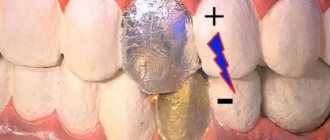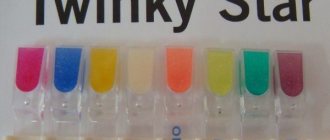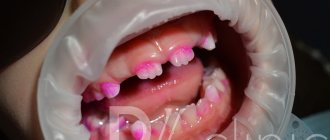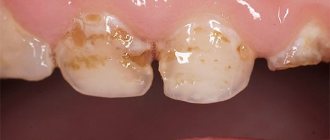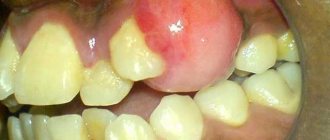Treatment of oral diseases with chamomile
Traditional medicine has been widespread at all times. Since ancient times, ancestors have identified many plants with healing properties. Among most plants, chamomile stands out significantly.
Chamomile is one of the most commonly used plants in medicine. Chamomile inflorescences are most often used to prepare medicines. They are carefully collected and dried. In this form, they can be used to prepare many medicines.
Why is chamomile beneficial?
Chamomile contains such beneficial substances as bitterness, vitamins (ascorbic (C) and nicotinic (P) acids, carotene, “essential chamomile oil.” The combination of these substances determines most of the healing effects of chamomile, such as antidepressant effect, lowering blood pressure pressure, strengthens and speeds up breathing, increases the number of heart contractions.In addition, chamomile has an anti-inflammatory, sedative and anesthetic effect.
Due to its anti-inflammatory effect, chamomile has become widespread in dentistry, as well as in other areas in which inflammatory diseases often occur.
How to properly prepare chamomile infusion?
Dried inflorescences are used. 2-3 tablespoons of raw material are poured with boiling water, left for an hour in an airtight sealed container, then filtered. The resulting infusion is used to rinse the mouth for inflammation of the gums and stomatitis. It is recommended to rinse the mouth with the resulting infusion every half hour to an hour (but at least 3-5 times a day; the infusion must be warm). It is also possible to use ready-made medicines based on chamomile (such remedies include romazulan (to prepare an infusion, use one teaspoon of the product per glass of boiling water)). Chamomile is effective in the treatment of fungal stomatitis and candidiasis.
Chamomile also helps with bad breath. An infusion is prepared consisting of crushed chamomile flowers and natural grape wine (about 200 ml). The mixture is prepared in the evening. It infuses overnight and in the morning you can take 30 ml of infusion on an empty stomach.
The use of complex preparations for the treatment of oral diseases is also common. For inflammatory processes of the gum mucosa, the collection of chamomile and calamus is widely used. Both of these plants have disinfectant and anti-inflammatory properties, and their use together enhances each other's effects. Prepare a decoction of 5 tablespoons of calamus and 3 tablespoons of chamomile. The herbs are poured into 0.5 liters of boiling water, infused for half an hour, then filtered. The decoction is used to rinse the mouth 3-4 times a day. It should be remembered that with prolonged use of chamomile infusion, the development of weakness, headaches (due to the essential oils contained), and dizziness is possible.
Chamomile decoction is indicated for most inflammatory processes. It can be used in almost all people and is also safe to use in pregnant women and children.
Contraindications for use
However, it should be remembered that the use of chamomile is not always possible. Contraindications to its use will be individual intolerance, anacid gastritis. If used excessively, depression of the nervous system may occur. Drivers and doctors should use chamomile with extreme caution.
Based on the above, it is clear that chamomile is an extremely useful plant. Due to its healing properties, chamomile can be called “natural doctor.”
How to brew chamomile as a mouth rinse for gum inflammation and dental diseases?
Oral diseases - redness of the gums, swelling, bleeding, sore throat - these are the problems that chamomile effectively copes with. This happens due to its anti-inflammatory effect.
Chamomile inflorescences are collected, then dried and subsequently used as an independent remedy or as part of herbal preparations. It is recommended to use chamomile purchased at a pharmacy, since not everyone can recognize the type of plant that has healing properties. Those who collect herbs on their own should learn to identify chamomile. It has an apple-honey smell and the flower is hollow when cut crosswise.
We invite you to familiarize yourself with Nimesil thins the blood | No colds
Treatment of oral diseases with chamomile
Traditional medicine has been widespread at all times. Since ancient times, ancestors have identified many plants with healing properties. Among most plants, chamomile stands out significantly.
Chamomile is one of the most commonly used plants in medicine. Chamomile inflorescences are most often used to prepare medicines. They are carefully collected and dried. In this form, they can be used to prepare many medicines.
Chamomile decoction for dental treatment - chamomile tea and compress
Chamomile flowers are an indispensable ingredient in many folk recipes, both medicinal and cosmetic. This plant is used to relieve symptoms of a variety of diseases. Chamomile has a good effect on toothache. With its help, you can quickly alleviate the condition if it is not possible to immediately consult a doctor.
About the benefits of the queen of medicinal herbs
This plant has a unique formula that includes a whole complex of active components.
The healing properties of chamomile have long been known
For many years, cosmetologists and pharmacists have been trying to synthesize substances that nature itself put into healing herbs. But no synthetic drug can compare with the benefits of natural chamomile.
The effect of chamomile for toothache is explained by the following composition:
- Flavonoids, which relieve inflammation and have an antiseptic effect
- Microcompounds with analgesic properties
- Selenium, zinc, copper - elements that promote tissue repair
- Organic acids that renew tissues
Thanks to this formula, chamomile-based home remedies will help relieve pain, reduce swelling, and stop inflammation. But rinsing cannot be used as the only treatment method. Contact your dentist as soon as possible.
Treatment methods for toothache
Chamomile is a completely safe natural remedy that has virtually no contraindications. But it should be used in moderate dosages. Rinses, lotions, and compresses are good for toothache. Choose the method that suits you best.
Rinse: excellent effect with a gentle action
Rinsing your mouth with chamomile infusion will help relieve acute pain.
To cope with acute toothache, a healing composition is prepared according to this recipe. Take a few tablespoons of dried flowers and pour boiling water over them. Insist for half an hour. The rinse is ready.
Important! The optimal temperature for rinsing is slightly above room temperature. Cold or too warm liquid can irritate the nerve. When rinsing, pay attention specifically to the affected area. To enhance the effect, you can add a couple of tablespoons of echinacea or sage to the decoction.
/
Chamomile tea reduces sensitivity, helps to relax and calm down. Ready-made tea bags can be purchased at the pharmacy. You can also prepare a medicinal drink yourself. To do this, brew 5-6 tablespoons of chamomile flowers in a ceramic teapot. For taste, you can add blackberries, fireweed, and lingonberry leaves.
These components fit perfectly together.
Compress against inflammation
If your gums are inflamed, a simple safe remedy will help - a compress with chamomile. Soak cotton wool in chamomile oil and apply to the affected area for 10 minutes. It is very important to apply a compress to the gum on both sides so that the medicinal substances penetrate the tissue faster. Before this procedure, your teeth should be thoroughly cleaned.
Chamomile oil is easy to make at home. To do this you will need a glass of chamomile and 2 glasses of vegetable oil.
Olive is most suitable, but you can also use unrefined sunflower. Chamomile flowers are poured into a container and completely filled with oil.
After this, the composition must be allowed to brew; it is hidden in a warm, dark place for 10-15 days. It is better to store the finished product in the refrigerator.
We prepare our own medicine
Chamomile tea is sold in any pharmacy, and its price is very affordable. Therefore, today few people are engaged in independently harvesting flowers. But if you love outdoor recreation, why not collect some fragrant medicine and please your loved ones with healthy aromatic tea?
It is very important to know the distinctive characteristics of medicinal plants. Remember that there is only one type of chamomile that has healing properties. The medicinal chamomile flower has a hollow pad in the center, and the petal corolla is located just below.
June is the best time to collect medicinal chamomile
The best time to collect is in mid-June. It is during this period that chamomile contains many beneficial substances. In the northern regions they begin to collect it a little later.
The place where chamomile grows is also of great importance. So, you should not collect it near busy roads and near large populated areas. The ideal place is a clearing located many kilometers from the city limits.
When harvesting, the stems are plucked 3 cm below the inflorescences.
Dry the chamomile in a shady, not cold place on a clean cloth, stirring from time to time. Linen bags are used for storage. The collection can be used for various purposes: prepare fragrant teas and decoctions for medical procedures, and use in home cosmetology.
If you are treating a toothache with chamomile, remember that it only helps relieve symptoms. To completely solve the problem, contact your dentist.
Reviews on the use of chamomile for teeth and oral cavity
For flux, do not rinse with a decoction of chamomile or any other herb. This is so dangerous, a dental surgeon is urgently needed, otherwise there will be disastrous consequences. Flux is no joke; this inflammation is very serious. My brother had gumboil. So he barely waited for an ambulance.
Kari_nochka
If it hurts to press on a tooth and it seems that it is larger than others, pulsating, swelling is possible. What to do: rinse soda-sage-chamomile frequently, sulfa drugs according to the regimen indicated on the package (biseptol, sulfadimethoxine), antibiotics only as prescribed by a doctor. Serious complications are possible. It is aggravated by hypothermia and colds (just wet your feet). RUN TO THE DOCTOR!!!!!
Valentina
In the first days after tooth extraction, it is not recommended to rinse with anything! Otherwise, the blood clot that forms in the socket after tooth extraction may fall out and then it will be like mine - a dry, non-healing socket, which will have to be smeared with expensive regenerating ointments for a couple of weeks. You can drink lukewarm chamomile tea so that the water gets on your gums, and that’s it! Two more herbs needed after removal are sage and St. John's wort, but it is better to choose sage - it is more suitable for women and does not dry out the mouth as much as chamomile.
Nata
Source: https://ZubNeBoley.ru/lechenie/narodnye-sredstva/romashka-pri-lechenii-zubov-i-polosti-rta/
Why is chamomile beneficial?
Chamomile contains such beneficial substances as bitterness, vitamins (ascorbic (C) and nicotinic (P) acids, carotene, “essential chamomile oil.” The combination of these substances determines most of the healing effects of chamomile, such as antidepressant effect, lowering blood pressure pressure, strengthens and speeds up breathing, increases the number of heart contractions.In addition, chamomile has an anti-inflammatory, sedative and anesthetic effect.
Due to its anti-inflammatory effect, chamomile has become widespread in dentistry, as well as in other areas in which inflammatory diseases often occur.
About company
The dental clinic Dentistry Romashka has ultra-modern technology. Highly qualified specialists who provide quality service to their patients, as well as reasonable prices for services, bring the Romashka Dentistry medical center high popularity. On the official website of the clinic you can view the price list for services, as well as independently make an appointment via the Internet. Online registration for appointments takes place 24 hours a day. Thanks to the excellent results of current diagnostics, consultation and treatment of patients is carried out at the highest level. Chamomile guarantees a special approach to everyone who contacts us, and provides a guarantee of comfortable conditions. Our medical center is located at: Primorskoye sh., 279, Sestroretsk. We will be glad to meet you, we will take care of your health.
How to properly prepare chamomile infusion?
Dried inflorescences are used. 2-3 tablespoons of raw material are poured with boiling water, left for an hour in an airtight sealed container, then filtered. The resulting infusion is used to rinse the mouth for inflammation of the gums and stomatitis. It is recommended to rinse the mouth with the resulting infusion every half hour to an hour (but at least 3-5 times a day; the infusion must be warm). It is also possible to use ready-made medicines based on chamomile (such remedies include romazulan (to prepare an infusion, use one teaspoon of the product per glass of boiling water)). Chamomile is effective in the treatment of fungal stomatitis and candidiasis.
Chamomile also helps with bad breath. An infusion is prepared consisting of crushed chamomile flowers and natural grape wine (about 200 ml). The mixture is prepared in the evening. It infuses overnight and in the morning you can take 30 ml of infusion on an empty stomach.
Read also: How to treat inflammation and bleeding gums
The use of complex preparations for the treatment of oral diseases is also common. For inflammatory processes of the gum mucosa, the collection of chamomile and calamus is widely used. Both of these plants have disinfectant and anti-inflammatory properties, and their use together enhances each other's effects. Prepare a decoction of 5 tablespoons of calamus and 3 tablespoons of chamomile. The herbs are poured into 0.5 liters of boiling water, infused for half an hour, then filtered. The decoction is used to rinse the mouth 3-4 times a day. It should be remembered that with prolonged use of chamomile infusion, the development of weakness, headaches (due to the essential oils contained), and dizziness is possible.
Chamomile decoction is indicated for most inflammatory processes. It can be used in almost all people and is also safe to use in pregnant women and children.
Is it possible to rinse your gums with chamomile?
You can rinse your gums with chamomile. Such rinses, carried out correctly, can somewhat reduce inflammation and ease pain associated with it. If after the procedure the solution is not swallowed but spat out, it does not have any systemic effect on the body and does not cause any side effects. Chamomile is safe when rinsing the mouth with it, but in case of serious illness it cannot be used as an independent remedy
You can rinse your gums with chamomile, including during pregnancy and breastfeeding. Again, if the rinses are prescribed by a doctor, and the solution itself is not swallowed, it will not have any effect on the condition of the fetus or the pregnant woman herself.
The only risk of rinsing your gums with chamomile is the possibility of developing an allergic reaction. This probability is very small, cases of hypersensitivity to chamomile decoction or infusion are extremely rare, but still, if the patient has never used such herbal remedies before, it is better to carry out the first 1-2 procedures with a minimum amount of solution and observe your condition. If no rashes appear on the skin, you can rinse your gums with a standard amount of product and on a regular schedule.
We invite you to familiarize yourself with Glue for dental crowns: types of glue, application features, possible complications
Chamomile for teeth rinse
Chamomile is a reliable assistant, and we are not talking about the opportunity to obtain information of dubious reliability about the feelings of the subject of heartache. The flowers of this plant are a necessary ingredient in many home remedies and cosmetics. Chamomile for toothache is a fast-acting remedy that can relieve acute symptoms before medical attention is provided.
Beneficial properties of the queen of green pharmacy
The composition of chamomile raw materials is universal: the substances that pharmaceuticals and cosmetology have been trying to synthesize for many years with varying degrees of success are inherent in the plant by nature itself. In order not to doubt whether chamomile helps with toothache, it is enough to evaluate its chemical composition:
tissue-renewing organic acids, including soothing valerian; copper, zinc and selenium that restore tissue structure; analgesic microcompounds; anti-inflammatory and antiseptic flavonoids.
Accordingly, rinsing with chamomile for toothache not only reduces the sensitivity of nerve endings, but also reduces swelling and slows down the inflammatory process. Such methods cannot be considered as the main ones for diseases of the oral cavity, but they will help to wait a few hours before going to the dentist.
Effective methods to combat toothache
Chamomile-based folk remedies are safe in moderation. Oral infusions, compresses and lotions have no contraindications. For toothache, you can combine all these techniques without delaying a visit to a specialist.
Rinsing: gentle action and quick results
A strong decoction of chamomile to relieve acute pain is prepared from 5-7 tablespoons of dry chamomile in a glass of boiling water. The decoction is ready in 30 minutes. It is necessary to rinse with a liquid slightly warmer than room temperature, since cold and heat can irritate the nerve.
It is important to rinse just the area of the tooth, and not the entire mouth. You can add 2 tablespoons of sage or echinacea to the collection, which enhances the effectiveness.
Tea: calming effect
Ready-made chamomile tea sachets are sold by pharmacy chains. To prepare it yourself, you need a ceramic teapot containing 5-6 tablespoons of dried chamomile. Tea reduces sensitivity and calms. Lingonberry leaves, fireweed and blackberries help improve the taste; they can be safely combined in tea.
Compress: anti-inflammatory effect
A cotton swab soaked in chamomile oil is applied to the inflamed gum for 10-15 minutes. It is important to cover both sides of the inflamed area, ensuring maximum penetration of the composition. You must first brush your teeth.
To make your own chamomile oil, you will need a glass of inflorescences and 2 cups of oil. The raw materials are poured into a jar and filled with vegetable oil. Olive is optimal, but regular unrefined sunflower is also suitable. The collection must be completely immersed in oil.
It is necessary to infuse in a warm place, but without exposure to sunlight for 10 - 15 days, then strain. Store the finished oil in the refrigerator, scooping it out as needed with a clean spoon.
Replenishing the first aid kit yourself: rules for collecting and storing chamomile
Therapeutic and prophylactic products based on chamomile can be bought at the pharmacy, and dry collection, ready for use, is also sold there for a symbolic price. Lovers of hiking in nature can prepare a universal medicine on their own, pampering their loved ones with the aromas of fragrant tea all year round.
When collecting, the main thing is to correctly identify the desired flower, without confusing it with other species. Pharmacy chamomile is distinguished by a hollow pad in the central part and a crown of petals located just below. Only this species has healing properties.
The plant gains full strength by mid-June, in the northern regions a little later. Chamomile should be collected by plucking the stem 3 cm below the inflorescence in areas remote from highways and busy populated areas. It is optimal if the clearing for collection is 15-20 km away from the city limits.
The collected material is dried on a towel or clean napkin in a shaded but not cold place, stirring occasionally. Store in a linen bag in a dry cabinet, avoiding caking. The finished collection can be safely added to teas and cosmetics, and used in the form of aromatic sachets.
It is important to remember that chamomile for toothache can only be considered a preventive remedy. Making an appointment with a dentist and treating the problem using traditional medicine methods is not canceled, even if the acute pain has gone away.
Contraindications for gargling with chamomile
Be careful when giving chamomile to children.
Do not use chamomile if you are allergic or intolerant to the infusion. Give inflorescences to children under one year of age with extreme caution. This flower can have different effects on infants, for example, cause allergies. Pregnant women should pay special attention when treating with a decoction. Therefore, it is better in all cases to consult a doctor before use. If we have asthma or pollen allergies, consult an allergist before treatment.
Chamomile is considered the safest among all medicinal herbs, but there are some contraindications for the use of decoctions based on it. These include:
- Gastritis during exacerbation.
- Nervous disorders.
- Hypersensitivity or a history of allergic reactions to the flower.
- Diarrhea.
The decoction should be used with caution when:
- Cardiac diseases.
- Tachycardia.
- Taking sedatives, diuretics and blood thinners.
Causes of toothache
When you communicate with a stranger, you pay a lot of attention to his appearance, manner of communication, voice and other things. But far from the last place on this list will be a smile. And in order to keep the smile on your face, you need to monitor the condition of your teeth and especially your gums. Gums for teeth are like soil for plants. Any problems can lead to tooth loss. One of the effective methods is the treatment of gums with chamomile.
Chamomile mouth rinse for sore gums
Recently, more and more people have been complaining about bleeding gums. This problem may occur due to:
problems with the stomach and intestines, improper oral care, poor nutrition, periodontal disease.
Symptoms of gum disease may include:
redness, swelling, bleeding.
If treatment is not carried out on time, all this can lead to tooth loss. Doctors recommend a large number of ways to treat this problem. One effective method is to rinse your gums with chamomile.
Rinsing inflamed gums with chamomile is considered quite effective and will help get rid of oral health problems in the shortest possible time. Here are some good folk remedies.
Chamomile decoction for gums with calendula
To prepare the infusion you will need:
a tablespoon of chamomile and calendula flowers, a glass of boiling water.
Pour a glass of boiling water over a spoonful of flowers and let stand for about half an hour. The mixture must be covered with a lid. After the allotted time, strain and use as a rinse. You can rinse with different infusions alternately. For example: use chamomile one day, and then calendula.
Chamomile infusion
boiling water, a handful of chamomile flowers.
In order to prepare the infusion, you need to pour boiling water over a small amount of chamomile flowers. It is recommended not to boil the flowers, but to infuse them. The flowers should be infused for several hours. As a result, you should get a yellow infusion. It should be used as a mouth rinse after brushing your teeth.
Chamomile with honey
This recipe is recommended for use for stomatitis, gumboil, and periodontal disease. For rinsing, you must use a warm infusion. It is advisable to carry out this procedure every 30 minutes.
a glass of boiled water, a tablespoon of chamomile flowers, 2 tablespoons of honey.
Pour a glass of boiled water over the dried flowers. Let stand for about 20 minutes. Then strain thoroughly and squeeze out the pulp. Next, add boiled water to the original volume. If you are not allergic, you can add honey.
You can also use not only dried chamomile flowers, but also the drug Romazulan. This preparation contains extract and oil of this plant.
15 drops of the drug, a glass of boiled water.
To prepare a mouth rinse solution, you need to add the required amount of the drug to water.
For toothache
To relieve toothache and inflammation on the gums you need to take:
sage leaves - 1 tablespoon, chamomile flowers - 2 tablespoons, boiling water - a glass.
Read also: Salt rinsing for gum inflammation
Mix the plants together and pour boiling water over them. After 15 minutes, the infusion can be used to rinse your mouth. The infusion must be warm. It is advisable to hold this solution for a short time near the diseased tooth.
How to brew chamomile to rinse gums?
It is necessary to remember that chamomile contains a large amount of essential oils and that is why it is not recommended to boil it, because when boiled, most of the beneficial substances simply evaporate. It is recommended to store the finished solution in a cool place in porcelain or glass containers, but no more than a day. It is best to always prepare a fresh solution.
Remember, before starting any medication, it is advisable to consult your doctor.
Treatment of oral diseases with chamomile
Traditional medicine has been widespread at all times. Since ancient times, ancestors have identified many plants with healing properties. Among most plants, chamomile stands out significantly.
Chamomile is one of the most commonly used plants in medicine. Chamomile inflorescences are most often used to prepare medicines. They are carefully collected and dried. In this form, they can be used to prepare many medicines.
How to use chamomile to treat gums?
Dentists welcome the use of herbal remedies for gum inflammation and give recommendations on the choice of specific plants. Rinsing helps a lot when 5-6 tbsp. The flowers are steamed with 1 cup of boiling water for 30 minutes.
To avoid burns to the mucous membrane, the infusion is pre-cooled. During the procedure, more attention is paid to the area that is inflamed. To enhance the effect of the product, add 2 tbsp. sage or echinacea, and the volume of water is increased by 100 ml.
The infusion is used for stomatitis, ulcers on the tongue, swollen gums, gumboil, and other diseases. Honey is good at eliminating bacteria, but is only used if there are no allergic reactions. To increase the effectiveness of the product, it is prepared in a water bath. 500 ml of water is poured into an enamel container, add 7 tbsp. chamomile, heat in a water bath for 15 minutes.
Leave until completely cooled, squeeze out and filter, add boiled water to the original volume. Add 4 tsp. honey The finished infusion is used 5 times a day until the toothache disappears.
Tea with flowers has a good calming effect. It is sold by pharmacy chains, but you can also prepare it yourself - pour 5 tbsp into a teapot. flowers, steam with boiling water. You can drink tea without sugar, or with honey. The drink has an excellent effect on the oral cavity, reduces gum sensitivity, and has a beneficial effect on the entire body.
You can use chamomile as a medicinal compress for gums. You need to take the oil, moisten a cotton pad or gauze, and apply it to the inflamed area of the gums for 10 minutes. To ensure maximum penetration of healing substances into the tissue, to the nerve, cotton pads should be placed on both sides of the gums around the diseased tooth. You need to brush your teeth and rinse your mouth.
The oil is sold by pharmacy chains, but can be prepared at home. You will need 500 ml of olive oil and 100 g of flowers. The components are combined in a glass jar and the mixture is infused for 12 days. The finished oil is filtered and stored in the refrigerator. From the container, use a clean spoon to take the amount needed for the procedure.
Why is chamomile beneficial?
Chamomile contains such beneficial substances as bitterness, vitamins (ascorbic (C) and nicotinic (P) acids, carotene, “essential chamomile oil.” The combination of these substances determines most of the healing effects of chamomile, such as antidepressant effect, lowering blood pressure pressure, strengthens and speeds up breathing, increases the number of heart contractions.In addition, chamomile has an anti-inflammatory, sedative and anesthetic effect.
Due to its anti-inflammatory effect, chamomile has become widespread in dentistry, as well as in other areas in which inflammatory diseases often occur.
Reviews on the use of chamomile for teeth and oral cavity
Soothing tea
Based on the above, it is clear that chamomile is an extremely useful plant. Due to its healing properties, chamomile can be called “natural doctor.”
Chamomile is often prescribed as a measure to prevent gum disease, tissue degeneration and bacterial infection. As a preventative measure, it is recommended to rinse your mouth with a homemade chamomile decoction twice a day. Before this, the mouth should be rinsed with plain water to remove food particles. For maximum effect, it is important to use dental floss.
You can use chamomile-based toothpaste. You can use a herbal cleansing composition to brush your teeth constantly if it contains fluoride. Then the teeth will receive all the necessary microelements, and the gums will quickly regenerate and become inflamed less often. Chamomile will have a nourishing effect, strengthen gums and reduce the risk of loose teeth.
How to properly prepare chamomile infusion?
Dried inflorescences are used. 2-3 tablespoons of raw material are poured with boiling water, left for an hour in an airtight sealed container, then filtered. The resulting infusion is used to rinse the mouth for inflammation of the gums and stomatitis. It is recommended to rinse the mouth with the resulting infusion every half hour to an hour (but at least 3-5 times a day; the infusion must be warm). It is also possible to use ready-made medicines based on chamomile (such remedies include romazulan (to prepare an infusion, use one teaspoon of the product per glass of boiling water)). Chamomile is effective in the treatment of fungal stomatitis and candidiasis.
Chamomile also helps with bad breath. An infusion is prepared consisting of crushed chamomile flowers and natural grape wine (about 200 ml). The mixture is prepared in the evening. It infuses overnight and in the morning you can take 30 ml of infusion on an empty stomach.
The use of complex preparations for the treatment of oral diseases is also common. For inflammatory processes of the gum mucosa, the collection of chamomile and calamus is widely used. Both of these plants have disinfectant and anti-inflammatory properties, and their use together enhances each other's effects. Prepare a decoction of 5 tablespoons of calamus and 3 tablespoons of chamomile. The herbs are poured into 0.5 liters of boiling water, infused for half an hour, then filtered. The decoction is used to rinse the mouth 3-4 times a day. It should be remembered that with prolonged use of chamomile infusion, the development of weakness, headaches (due to the essential oils contained), and dizziness is possible.
Chamomile decoction is indicated for most inflammatory processes. It can be used in almost all people and is also safe to use in pregnant women and children.
How should you rinse your mouth with chamomile for gingivitis?
Using the product is quite simple - first you need to prepare an infusion. It is recommended to give preference to infusion rather than decoction. In other words, there is no need to boil the flowers - just pour boiling water over them and let them brew for several hours.
The resulting yellowish solution should be used as a mouth rinse after brushing your teeth. Remember that the development of gum inflammation is a consequence of the multiplication of pathogenic microorganisms in the gum pockets, and these bacteria multiply, as a rule, in dental plaque.
Therefore, proper oral care is also of great importance. And in this regard, it is extremely important to choose good toothbrushes and toothpastes. Consider electric toothbrushes, which have motorized bristles that help remove plaque more effectively. Philips electric toothbrushes are especially popular today.
characterized by reliability and high efficiency due to the special arrangement of bristles. However, it is worth remembering that any brush wears out within six months, so do not buy too expensive models if you cannot afford to change your toothbrush every six months.
It is better to give preference to more affordable options and replace them after six months.
It is important to brush your teeth after every meal, and if gingivitis worsens, use chamomile infusion every time for anti-inflammatory purposes. The course of treatment usually lasts about a week, after which acute manifestations of inflammation in the form of swelling, soreness and bleeding of the gums should go away.
If symptoms persist, then you should consult a doctor to find a more effective remedy for gingivitis in your case.
It is impossible to say for sure whether chamomile will be effective in your case or not, since everything depends on the condition of the gums and other hygiene procedures.
But it’s worth a try in any case, since this method is one of the cheapest, and in terms of price-effectiveness ratio it occupies one of the leading places.
Remember also that chamomile can be used not only for medicinal purposes, but also for preventive purposes. It should not be used regularly, but periodic use can prevent the development of gingivitis even in the presence of predisposing factors.
We invite you to familiarize yourself with Antibiotics for sore throat for adults: list of drugs in tablets
Chamomile exhibits a powerful anti-inflammatory effect and can also be used for other inflammatory diseases, such as gastritis or peptic ulcers.
What are the benefits of medicinal chamomile?
Chamomile surprises with its amazing healing composition and beneficial properties, which are widely used in cosmetology and pharmaceuticals. To ensure the effectiveness of such a plant, it is enough to understand the elements that make up its composition. It consists of chemicals that renew tissues and soothe their structure. Thanks to organic acids, chamomile restores body cells and has an anti-inflammatory effect. The medicinal culture contains:
- carotenoids;
- choline;
- resins;
- phytosterol;
- carotene;
- B vitamins.
Such a rich composition promotes analgesic, anti-inflammatory and antimicrobial effects. With the help of chamomile, you can soothe itching in the mouth, neutralize unpleasant odors and speed up recovery processes.
The complex effect for gums and teeth is achieved due to the fact that the solution, when rinsing the mouth, significantly reduces the level of sensitivity of nerve endings. Chamomile also significantly reduces swelling and stops the inflammatory process. But plant-based medications will not be able to completely overcome toothache. But they significantly reduce discomfort and alleviate the condition before going to the dentist. A significant advantage of chamomile-based drugs is that they are not addictive and are completely harmless to the human body. Regular rinsing with the solution can significantly reduce the number of bacteria on the oral mucosa.
Herbal remedies
Herbs for rinsing gums - a remedy for the treatment of gingivitis, periodontal disease, periodontitis. For this purpose, you can use chamomile, eucalyptus, and sage.
Chamomile #8212; as a rinse for teeth and gums during inflammation
If possible, it is better to use pharmaceutical preparations of herbal origin, because those made independently contain a significant amount of pigments, which over time settle on the teeth and give them a yellowish tint.
The use of oak bark is especially undesirable. A decoction of this raw material has a lot of pigments and tannins, thanks to which the teeth will very quickly darken and become covered with plaque. Microorganisms will join the film formed on the teeth, creating hard tartar.
Unlike homemade decoctions, pharmaceutical elixirs and extracts of medicinal plants contain all the useful substances, but are cleared of pigments. They can be used long-term (all year round), as long as they do not contain antibacterial components such as triclosan.
It should be remembered that in case of inflammation of the gums, everyone decides for themselves what to rinse with, but any rinses during inflammatory processes can only be used as an adjunct to complex therapy and are not able to cure a serious disease.
- What to do if the gum moves away from the tooth
- Maxillary sinus cyst
- Blister on the gum: what is it?
We invite you to familiarize yourself with Kamistad baby - instructions for using the gel, price, reviews, composition
